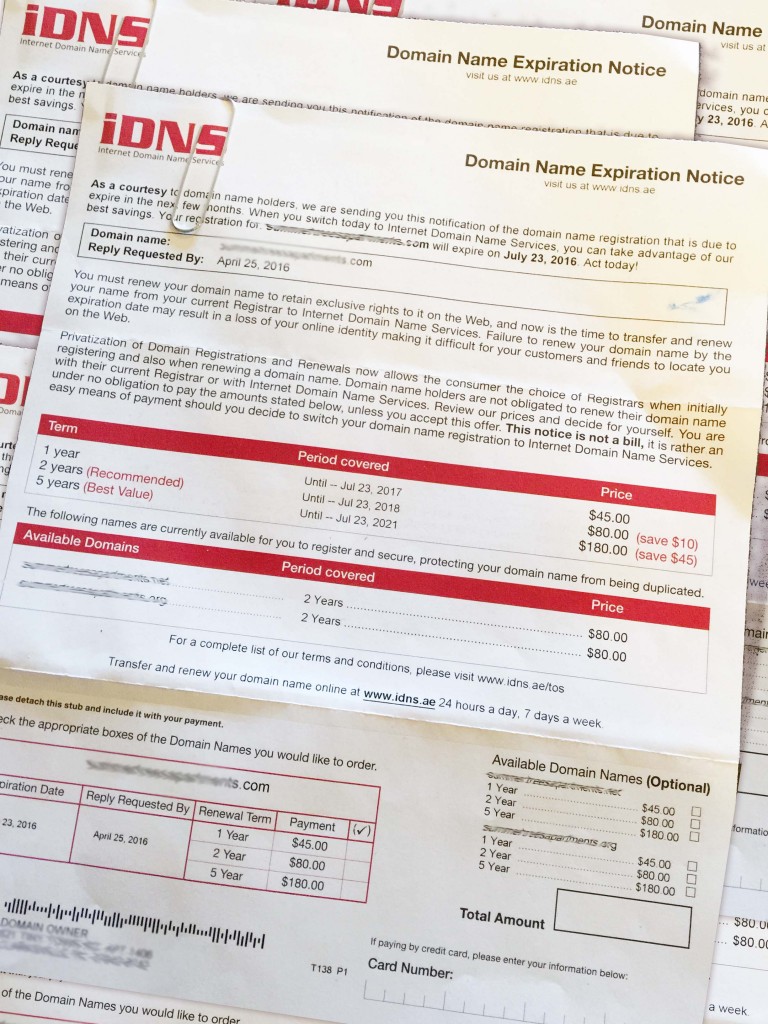These come in the form of a mysterious letter or email that impersonates a bill or missed payment.
 This is a fairly common scam that is often called Domain Slamming. A disreputable company (such as iDNS) will send you an email using phrases intended to scare you. They will try to make you believe that if you don’t pay them, your domain name will expire and your website will no longer work. They prey on people who either aren’t tech savvy or are too busy to read the fine print.
This is a fairly common scam that is often called Domain Slamming. A disreputable company (such as iDNS) will send you an email using phrases intended to scare you. They will try to make you believe that if you don’t pay them, your domain name will expire and your website will no longer work. They prey on people who either aren’t tech savvy or are too busy to read the fine print.
These companies convince people to pay them and “renew their domain name”, but they are actually making people switch to their company. They use threats like, “Failure to renew your domain name by the expiration date may result in a loss of your online identity making it difficult for your customers and friends to locate you on the web.” Once they have people scared, they convince the domain owners to pay upwards of 4 times the original price of their domain name.
How do you know it’s a scam?
Read the entire email or letter, they will include vague wording that will tell you it is not real such as:
- “You are under no obligation to pay the amount stated below, unless you accept this offer.”
- “Now is the time to transfer and renew your domain name.”
- “This is not a bill.”
If you are renewing your domain name, it should be with the company of your choosing. Renew it with your original domain name provider, or choose a new one, you are not obligated to a specific provider. The word transfer indicates that they are trying to trick you into switching to their service, for a much higher price with likely worse (or no) service. If you are wary of a company, you can also look up any business with the Better Business Bureau (https://www.bbb.org/) or search for online reviews.
But, I don’t know where my domain is registered.
This information is actually fairly easy to find. In fact, it is probably how these unsavory companies found you in the first place! The information is listed on the public WhoIs Register. To find out where your domain is registered you can visit this website:
WhoIs
The main information you will need is listed on just a few lines:
- Line 1 – Your domain name.
- Line 4 – Where your domain is registered.
- Line 7 – The expiration date of your domain name.
If a company other than the one listed on line 4 contacts you, they are soliciting your business. The safest and easiest way to renew your domain name is by using the company listed in line 4. Remember, if you get a confusing letter or email, look into it more. If you are still unsure, you can always talk to the team at Thrive Creative Group for more advice. We also offer web security & maintenance packages to help protect your website and your company!
Resources:
Whois
Kimballrexford.com
Wikipedia
Posted In: Marketing Tips